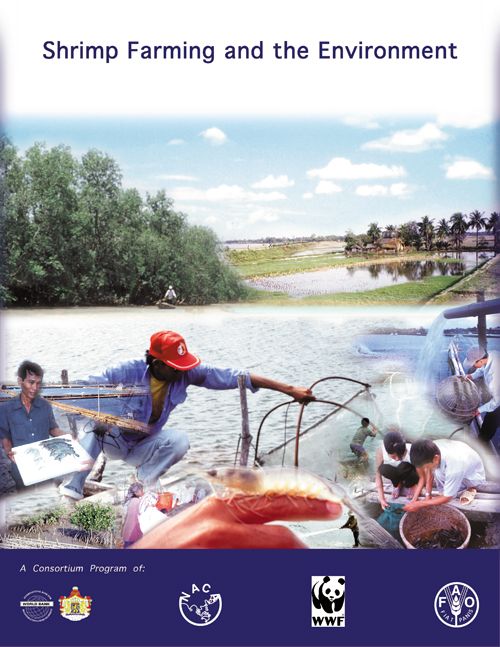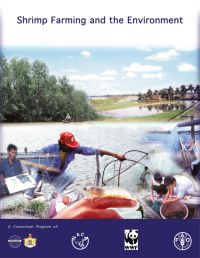Shrimp farming in Rushan County, China (abstract)
31 May 2005 | Anantha Kumar Duraiappah | 847 Downloads | .pdf | 10.56 KB | Better management practices, China, Shrimp, Environment and Sustainability
Shrimp production began in 1958 but did not really become a major activity till 1978. Prior to 1978, shrimp culture was not practiced on a continuous basis. There were three farms covering an area of 90 hectares with yields approximating 262.5 kg/ha. These farms were all practicing extensive systems. The evolution of the shrimp sector in the county can be described by three phases. The first phase between 1978 and 1982 can be called the “take-off” stage. By 1982, there were 24 farms with a total area of 933 hectares. Four were state farms, three town farms and 17 village farms. Production had increased slightly to about 285 kg/ha. The reason for the low output was that farms were still using extensive systems.
The period from 1983 to 1993 can be considered as the “boom stage” of shrimp production. By 1993 there were 300 farms covering a total area of 2,333 hectares with production levels of 2,750 MT – giving a yield of 1,138 kg/ha. Extensive systems now only covered 17% of total farm area. The majority of farms were using stocking rates of approximately 30pl/m2.
The 1994 to present period can be considered as the “bust stage” of shrimp production. By 1998, total area under shrimp production had reached to approximately 2667 hectares with a total of 340 farms. The breakdown of these farms are as follows: (1) 14 state farms with an area of 933 hectares; (2) 10 town owned farms with an area of 400 hectares; (3) 80 village owned farms with an area of 667 hectares; and finally (4) 236 private farms with an area of 667 hectares. Total production of cultured shrimp in 1998 was 1,000 tons thus giving an output of 420kg per hectare – a far cry from the 1,138 kg/ha experienced during the boom stage.
This case study is based on a farm survey of 41 farms out of the total 340 farms in the Rushan County. Out of the 41 farms in the survey, 5 were state owned, 6 were town owned and 10 were village owned while the remaining 20 were private farms. The results presented in this paper highlight two main problems. The first issue revolves around labor cost statistics. The value of labor cost during the culture period forms a larger than proportionate ratio of total variable cost. The second problem lies in the high fixed cost incurred by rehabilitated farms. In conclusion, farmers will be reluctant to adopt rehabilitated farming systems if no governmental support in the form of capital credits is provided.
Copyright, all rights reserved.

